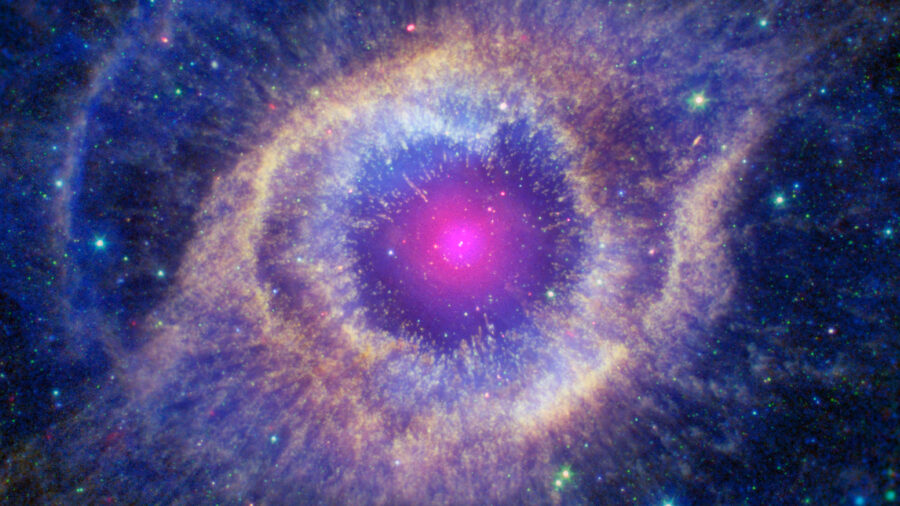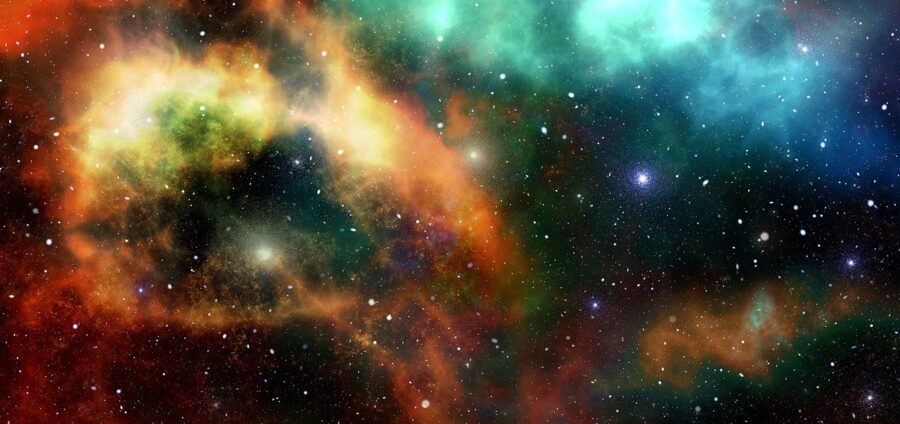See NASA’s Amazing Image Of An Exploding Star
NASA has captured an image of a Wolf-Rayet star.

The James Webb Telescope specializes in showing us puny earthlings majestic images of the universe from thousands of light years away. While humans are trying to discover the secrets of the universe and create things like wormholes or grow plants out of Moon dirt, the universe continues to go on with nary an idea that life exists in a tiny corner of the Milky Way Galaxy on a planet called Earth. NASA’s James Webb Telescope perfectly captured the beautiful transient nature of the universe in a photo of a dying star that the agency posted to its Twitter account.
The picture NASA posted shows a beautiful mushroom-looking cloud bursting out in every direction in purples, oranges, pinks, and yellows. These bright colors are the telescope picking up on the monumental amount of material being ejected from the star as it gets ready to explode into a supernova. The photo is an extremely rare observation, and it’s incredible that the observatory was able to capture the image so we can view the process of a Wolf-Rayet phase of the star’s death.
According to NASA, the Wolf-Rayet phase is a brief phase that some stars go through before they die. The phase occurs when the star has completely lost its outer helium and is forced to fuse inner helium (or other elements) inside its core. But not all stars can go through a Wold-Rayet phase before going supernova.
A star must first be excessively enormous to cause the Wolf-Rayet phase to occur at the end of its lifespan. For instance, this particular star that NASA has captured is 30 times the size of Earth’s sun. Wolf-Rayet stars are so big that they are constantly pushing off major chunks of their mass, which is what causes the vivid swirls of color surrounding the star, which is actually clouds of dust and gas.

One of the reasons it’s so rare for NASA to capture images of Wolf-Rayet stars is because the existence of these stars is few and far between. Wolf-Rayet stars are exceedingly hot, making them brighter than the majority of stars in the universe, but also forcing them to live a shorter lifespan. Wolf-Rayet stars only live a few hundred thousand years, which is next to nothing in the history of the world.
What makes this image so valuable to NASA research is the cloud of dust that surrounds the star will help scientists learn more about how planets are formed. According to current theories, planets are formed from the dust floating around in space, but the problem with this theory is that there is more dust free-floating out there than there should be. In other words, the universe’s “dust budget” is overly abundant.
Because of how much dust Wolf-Rayet stars produce, NASA believes they’re likely responsible for the dust surplus. In the past, we didn’t have the right type of technology to explore theories about the dust in the universe. But now, with the James Webb Telescope, scientists can observe this Wolf-Rayet star as it transitions into a supernova and discover if Wolf-Ryet stars are actually the leading contributor to universal dust or not.












